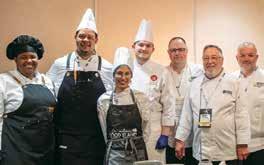









As the leaves change and the temperatures cool, the Fall/Winter 2025 issue reflects on the challenges and successes this year, examines the current state of the foodservice industry, and highlights tools and strategies to take restaurant operators into a healthy and prosperous new year.
We examine safety, from restaurant design to restroom cleanliness and employer liability, helping operators to better manage health and safety in their restaurants. In operations, we offer tips to boost the bottom line in today’s economy, ways to maximize profits, and ideas for improving the guest experience.
Connecting with customers is crucial, and we highlight how social media is a tactical vehicle for storytelling and inspiring operators to create menus that resonate with your guests. Tea is trending, too, and we take a look at some of the ways this versatile beverage can engage customers and raise revenues for your restaurant.
Our cover story tackles labour shortages and employee turnover, offering hiring strategies for operators looking to attract candidates, retain top talent, and build a thriving team.
The Canadian Trailblazer feature spotlights Not 9 to 5, a Toronto not-forprofit that advocates to improve workplace mental health for the hospitality, culinary, and tourism industry. The interview offers insight from Hassel Aviles, founder and executive director, delving into the industry’s culture, her approach to the mental health crisis, and the path to a brighter future.
Our Chef Q&A follows Chef Ned Bell’s journey, exploring his passion for hospitality, his dedication to sustainable seafood, and his “globally inspired and locally created” approach to cooking.
This issue’s Culinary Federation insert, À la Minute, recaps some of this year’s best events, including CooksCamp 2025, CapitalCare Foundation’s Feast on the Field, and a collaboration between the Toronto branch and Second Harvest. We also look ahead to the 2026 Annual Conference, coming up in May.
As we near the end of 2025, we learn from this year’s challenges, celebrate the successes, and we’re excited for all that the new year brings.
Can’t wait for you to read this issue!
Jessica Brill
jessicab@mediaedge.ca
official publication of the Culinary Federation, RestoBiz.ca, RestoBizBYTES and RestoBizGuide.
PUBLISHER: Chuck Nervick chuckn@mediaedge.ca
EDITOR: Jessica Brill jessicab@mediaedge.ca
DIGITAL MEDIA DIRECTOR: Steven Chester stevenc@mediaedge.ca
ART DIRECTOR: Annette Carlucci
GRAPHIC DESIGNER: Thuy Huynh
PRODUCTION MANAGER: Ines Louis inesl@mediaedge.ca
CIRCULATION INQUIRIES: Adrian Holland circulation@mediaedge.ca
CONTRIBUTING WRITERS: Kris Bonn
Dotti Haynes
David Hopkins
Mila Holosha
Evelyn Long
Shabnam Weber
Samir Zabaneh
Magazine Editorial Advisory Board
Jason Bangerter
Executive Chef, Langdon Hall Country House Hotel and Spa
Donna Bottrell, RD Owner, Donna Bottrell Food Consulting
Andrea Carlson Chef/Owner, Burdock and Co.
Connie DeSousa and John Jackson Co-owners/chefs, Charcut/Charbar
Jeff Dover Principal, fsSTRATEGY
Ryan Marquis Corporate Chef, CW Shasky
Gary McBlain
National Director of Culinary ServicesAmica Mature Lifestyles Inc.
Brent Poulton CEO, St. Louis Bar and Grill
Doug Radkey Owner and Director of Operations Key Restaurant Group
Matt Rolfe CEO and Hospitality Leadership Coach/Speaker, Results Hospitality
Kevin Brown SENIOR VICE PRESIDENT: Chuck Nervick
Views


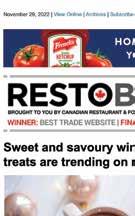




























How Not 9 to 5 is helping to change foodservice culture
By Jessica Brill

Historically, employees in the foodservice and hospitality industry face unique stressors like long hours, inconsistent scheduling, minimal time off, little to no work-life balance, and often, unhealthy work environments. While these conditions have been highlighted in recent years, the focus on the industry’s cultural and mental health crisis has been a long time coming.
As labour challenges persist for restaurant operators, studies show that 87 per cent of food and beverage workers experience burnout, 77 per cent report depression, and 84 per cent feel high levels of anxiety. However, these days, organizations like Toronto’s non-profit Not 9 to 5 are helping to raise awareness, providing valuable resources, and advocating for the mental health of hospitality workers and healthy work environments.
“Providing education and offering the necessary support to normalize the conversation around these issues creates more early intervention. This, in turn, makes space for people to identify mental health challenges and access the help they need before it escalates,” says Hassel
Aviles, founder and executive director of Not 9 to 5.
Because so many hospitality workers enter the industry at a young age and the existing culture is all they’ve ever experienced, they may not even be aware that something is wrong, illegal, or harmful. Often, these employees rely on restaurant owners and managers to lead and guide them in a healthy and responsible manner.
Hassel Aviles started her foodservice journey at 17, adding server, host, restaurant owner, entrepreneur, and more to her extensive resume throughout her career. As her responsibilities shifted and evolved, she was consistently exposed to the mental health challenges, substance abuse, and workplace trauma running rampant throughout the industry. However, in those days, the language and the tools to help with these challenges just did not exist, and discussions around mental health were not being had.
“Having these conversations means there’s less shame, and that results in less reliance on mal-adapted coping
mechanisms like alcohol, substance abuse, and all kinds of other risky behaviour,” says Aviles.
As she moved up in the ranks, Aviles wanted to do her part to end the cycle by leading differently - and that’s when Not 9 to 5 began. Created in 2018 as a part of a partnership, Aviles has been managing operations solely since 2020, working to recognize the struggles that hospitality workers are facing and to offer crucial help and support.
As the industry evolved and mental health became a topic of conversation, Not 9 to 5’s mission grew from raising awareness and promoting destigmatization to providing practical education and access to resources for industry workers.
“At the end of the day, a workplace does have a responsibility to promote the well-being of its employees and to prevent harm as part of a psychologically safe workplace, and that includes neglect,” says Aviles.
While COVID-19 shone a much-needed light on the industry, Aviles asserts that “this was an epidemic before the pandemic.” But
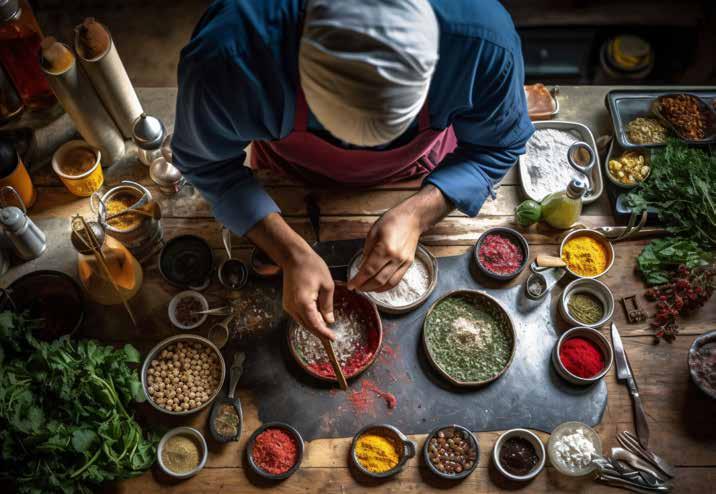
“A systemic problem requires systemic solutions, from the government to society to organizational support to the employees themselves.”
that time period gave many people the opportunity to take a look at the culture as the industry paused, beginning to question how foodservice was being operated, from salaries to workplace conditions to labour and more.
As understanding spreads and information about workplace conditions takes centre stage, how can we ensure that the industry continues to move in the right direction, and where does the responsibility lie in changing the behaviours so widely accepted in the past?
Aviles emphasizes that collaboration is key, and that a concentrated, combined effort will
forge a path forward. “A systemic problem requires systemic solutions, from the government to society to organizational support to the employees themselves,” she says.
Aviles notes that, in food safety, for example, there are rules, and those rules are strictly enforced. However, this type of expectation and structure just doesn’t exist to address the wellness or safety of staff in the hospitality industry. And while she acknowledges that things are moving forward, there is still a lot of work to be done.
Improving education is the first step to lasting change, starting with employers. While there is often a broad lack of
understanding about employee mental health and the need for support, there is also an often-overlooked crucial aspect of improved company culture – return on investment. Many operators are missing an important piece of the puzzle: there is high ROI for employers willing to take on the responsibility of employee well-being. Frequent turnover leads to high costs, operational unpredictability, a disrupted work environment, and unhappy customers. Investing in changing that culture and improving the systems and processes benefits the staff, of course. But it also betters the business with higher retention
rates, more effective risk management, stronger talent attraction, improved engagement in the workplace, and increased productivity. And as that investment grows, so, too, do those benefits to the business.
For restaurant operators, taking the steps to offer structure, resources, and support to teams may seem like a daunting and expensive endeavour, but small steps can reap lasting rewards. Restaurateurs need to get educated, spending as much time, effort, and investment as they can.
Aviles advises committing time and effort into having meaningful conversations in the workplace through staff meetings, one-on-one sessions, and including your team in the decision-making for your business. This helps them know they are supported and valued and incorporates their unique perspective into your solutions. “The old school hierarchy is no longer something that works, and companies need to flatten their organizational structure to include employees and have them feel invested in the decision-making process. That shows their employees are valued, supported, and that they matter,” says Aviles.
She suggests taking a strategic approach to mental health, similar to the way that operators often approach marketing or budgeting. Start by creating a mental health strategy at the start of the year and execute that plan with quarterly goals and expectations. Next, track and measure your successes and opportunities to help assess and improve your efforts. Lastly, repeat this process every year as part of your planning to stay committed to healthier employees and a healthier workplace.
For financial investment, consider sponsoring education, like training, workshops, and educational material, to create an environment where everyone is learning. Aviles stresses the importance of role modelling, too, suggesting that because this crisis has affected everyone from the top down, each staff member can be part of creating a positive and healthy culture.
On a larger scale, investing in substantial support and resources like benefits and medical solutions can also help encourage other businesses to compete by offering similar benefits. These types of steps raise the industry as a whole, resulting in meaningful, long-term industry-wide change.


Aviles and her team plan to continue their advocacy work and public speaking, along with providing workshops and offering resources to those in need. They have partnered with Smart Serve and Green Shield for the remainder of the year, providing access to the Smart Serve Cares program that offers support and free therapy, along with additional materials, including Not 9 to 5’s certification course, called CNECT (Change Needs Everyone Coming Together). The course is online and self-led, directed to
managers wanting to learn more, offering education and upskilling, and providing much-needed usable tools. “We need to talk more, listen more to each other, and hold space for these conversations to create permanent, powerful shifts,” she stresses. Collaboration and the desire to do better go a long way in making strides for today and for the next generation of hospitality workers. “At the end of the day,” says Aviles, “I just want to leave this industry better than how I found it and help others do the same.”

By Jessica Brill
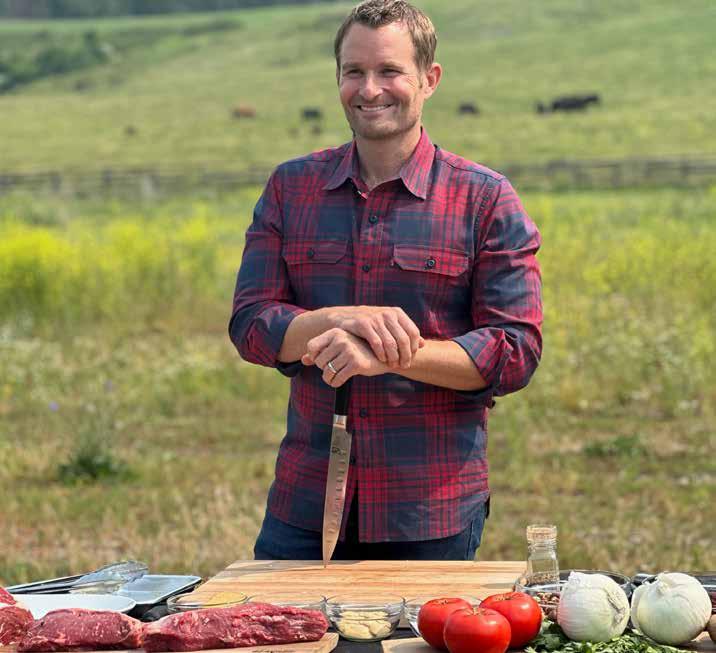


Ned Bell, chef, author, speaker, and advocate, began his culinary journey early in life, falling in love with cooking and its ability to bring family together. He started washing dishes at the age of 14 in a neighbourhood restaurant, and following high school, Chef Ned attended Dubrulle French Culinary School, beginning a long and impactful culinary career across Canada.
In talking with Chef Ned, we learned about his passion for hospitality, his dedication to sustainable seafood, and his “globally inspired and locally created” approach to cooking.
This interview has been edited for length and clarity.
CRFN:Throughout your career, has sustainability always been important to you?
Chef Ned: Yes! I was born in the Okanagan Valley to hippie parents, and my dad was the first hydroponic tomato grower in the area, so I recognized early on that food was in our backyard. My connection to the land and knowing where ingredients come from was instinctive, and knowing the local farmers was part of my life. Being farm-to-table was not a special practice; it was always just what we were – and still are.
CRFN: When did you begin taking steps to generate awareness and advocate for sustainable seafood?
Chef Ned: In 1999, the Seafood Watch Project began in California, and it was considered the “grandmother of the sustainable seafood movement.” Before sustainability became such an important topic, there was little regard for the environmental impact, and our oceans






were feeling the consequences. So, in 2005, chefs and scientists in BC united to create their own version of the project, called Ocean Wise, where we worked to educate the industry and make change. I soon realized, though, that while we were having these important conversations regionally, they weren’t happening nationally. So, to try and help address this, in 2014, I created the foundation called Chefs for Oceans. Following this, I decided to ride my bike across Canada, travelling from city to city to raise even more awareness and educate people about better ocean practices and seafood sustainability. This tour took 72 days and included 24 events with some of the best chefs in the country, where we addressed sustainable seafood across the communities.
CRFN: What does sustainable seafood mean, and how can chefs better practice these values in the kitchen?
Chef Ned: It’s basically a ‘who, what, where, when, and how’ conversation. Chefs need to know where their food is coming from, how and where the fish was harvested, whether it is in season, who the fisher is, and whether a fair price is being paid for the catch. While most people have heard that ‘wild is best,’ the reality is not wild or farmed, and fresh or frozen, it’s about all of the above. There’s nothing wrong with any of those scenarios, but often, people don’t know to ask the right questions. And that’s why the education around those areas is so important.


CRFN: What does the future hold for you and your culinary journey?
Chef Ned:I am going to continue pursuing initiatives that I am passionate about. I am a Chef Ambassador for British Columbia, and we have a program called Buy BC, where we help promote local processors, makers, fishers, and farmers – that is an ongoing project.
I am also the Culinary Director for a project called Planetary Health, and it’s something very near and dear to me. When cancer touched my family, I learned about the food being served in healthcare facilities and was struck by the fact that patients were not being nourished in a way that promoted health, strength, and recovery - and that’s when I joined the project. My work began with writing 55 plantforward test recipes to pilot at Vancouver General Hospital, launching 20 of those recipes two years ago, and moving on to hospitals in Richmond, UBC, and Lions’ Gate Hospital. Right now, these efforts are being implemented in seven hospitals so far, and we are still growing. The bottom line is, I want to continue to do work that matters. Whether that means impacting healthy lakes, rivers, oceans, and sustainable seafood, or Canadian fishers, farmers, harvesters, and processors, I can play a role in helping where I can. I want to do work that I love and to continue to make a difference wherever I can.
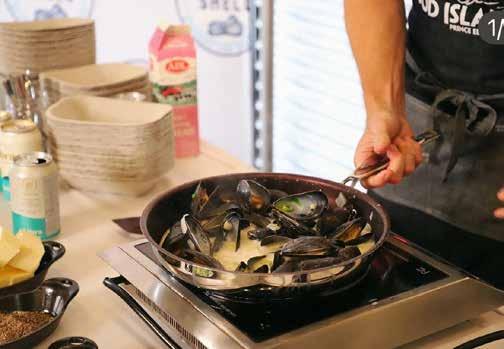
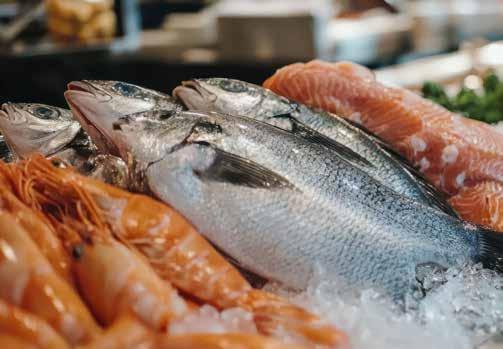

By Shabnam Weber

In an era defined by changing consumer habits, rising health consciousness, and experience-driven dining, tea is having a moment, and smart operators should pay attention. From functional beverages to the sober curious movement, tea is no longer just a sideline item; it's a centre-stage opportunity for foodservice businesses to enhance profitability, expand beverage offerings, and meet evolving customer demand.
Consumers today are looking for more than just hydration; they’re seeking beverages that do something for them. The rise in functional drinks is one of the most significant trends in the food and beverage industry, and tea is riding that wave in full force.
From green tea and matcha to turmeric, ginger, moringa, and adaptogenic herbals, teas now come packed with benefits: energy boosts, digestive support, anti-inflammatory properties, immunity, and stress relief. These aren’t just marketing claims; they’re part of why younger consumers, especially Millennials and Gen Z, are turning to tea as a daily ritual for wellness.
For restaurants and cafés, this opens up new menu possibilities. Offering a rotating “wellness tea of the month,” creating a signature iced tea with antioxidant-rich ingredients, or introducing a “calm and focus” tea blend can tap into this demand while commanding premium pricing.
THE SOBER CURIOUS SHIFT
Alcohol consumption continues to decline among younger generations, driven by a
growing focus on health, mindfulness, and lifestyle balance. According to Berenberg Research, Gen Z is drinking about 20 per cent less alcohol than Millennials did at their age. This “sober curious” movement has opened the door to non-alcoholic options that still feel grown-up and indulgent.
Tea is a natural fit for this phenomenon. Sophisticated enough to replace a cocktail and versatile enough for creative presentation, tea-based mocktails, sparkling iced teas, and kombucha are rising stars on modern menus. Whether it’s a cold-brewed oolong spritzer or a floral white tea served in a coupe glass with citrus and herbs, the key is presentation, taste, and intent.
For operators, this trend is an invitation to elevate your tea menu. Position tea as part of your non-alcoholic beverage strategy and give it the same love you’d give a craft cocktail. The margins are high, and the consumer appeal is growing, so the revenue potential is on the rise.
The ready-to-drink (RTD) tea market is booming, with global sales projected to

exceed US $47 billion by 2030. Consumers want convenience, and RTD teas deliver, especially when they come with clean labels, low sugar, and functional ingredients.
Even full-service restaurants can play here, with bottled house-made iced teas, pre-batched tea spritzers, or cold brew tea in to-go packaging, which are great for cafés, brunch spots, or hybrid dine-in/ takeout businesses. These formats don’t just meet customer needs; they increase the average cheque total and can help drive revenue during non-peak hours.
Move over chai, because matcha is here to stay! Tea lattes have expanded from a seasonal coffee shop trend into a year-round menu staple. Matcha lattes, London Fogs, Hojicha lattes, and even Butterfly Pea or Golden Turmeric teas offer café-style indulgence with perceived wellness benefits. They also come with serious profitability. A tea latte has a cost of goods sold (COGS) often below $1.00, but retails for $4 to $7.
Customizations such as oat milk, honey drizzle, and plant-based whipped cream can


appeal to a larger customer base and drive the price (and margin) up even more.
Restaurants and cafés can capitalise by including tea lattes on brunch menus, dessert pairings, or as an afternoon pickme-up. With proper training and equipment (such as milk frothers, matcha whisks, and more), these drinks are easy to incorporate without disrupting kitchen flow.
Today’s consumer is curious, and tea tells a story. Featuring regional specialties like Japanese Sencha, Taiwanese Oolong, South African Rooibos, or Moroccan Mint tea adds global flair and enhances the customer experience. Offering a short tea menu that highlights origin, preparation style, and suggested pairings adds a layer of education and connection that diners appreciate.
Tea tasting flights, pairing menus, or even tableside service of loose-leaf tea in clear infusers elevate the offering and create shareable moments for social media. These small experiences are inexpensive to execute but memorable for the guest, and that’s where loyalty and word-of-mouth begin to help build your business.
Despite its rising popularity, tea is still often poorly served in restaurants. It’s boiled to

bitterness, under-steeped, or tossed into the back of the menu with little thought or presentation.
But when served with care, tea becomes an experience. Use the right temperature water (never boiling for green or white teas), ensure steeping time is followed, and serve in attractive glassware or teapots. If using loose-leaf, consider providing timers or small cards to guide customers.
Train your staff to talk about tea the same way they might talk about wine, cocktails, or coffee. A few key talking points on flavour, origin, or health benefits will make your tea menu feel intentional and informed.
Beyond the fleeting trends, tea remains one of the most profitable items you can offer on the menu. The markup is significant, often more than 500 per cent, and the inventory costs are low. Tea has a long shelf life, requires
no refrigeration, and can be used in multiple formats: hot, iced, latte, cocktail, mocktail, to-go, and dessert-infused.
Unlike coffee, which demands precise brewing and expensive equipment, tea can be scaled easily and consistently. Whether you're running a full-service restaurant, a fast-casual spot, or a graband-go café, tea fits the bill.
In a changing beverage landscape, tea offers something rare: it’s ancient, adaptable, and exactly what today’s consumer is looking for. Whether they want health benefits, cultural discovery, a non-alcoholic indulgence, or simply something comforting and familiar, tea delivers and does so with impressive margins.
For foodservice operators, the opportunity is steeped in potential. The question is no longer should you pay attention to tea; it’s how fast you can elevate it.
Shabnam Weber has spent over 25 years in the tea industry, beginning with her own innovative tea company in Toronto. Now President of the Tea and Herbal Association of Canada, she developed the Tea Sommelier® program and has helped position the association as a global industry leader. Shabnam serves as Canada’s representative and Vice-Chair of the UN FAO Intergovernmental Group on Tea and is a co-founder of the International Alliance of Women in Tea. Named one of CEO Magazine’s Top 50 Women over 50, she champions diversity and sustainability while working to strengthen the global tea community through collaboration and connection.







Gen Z is drinking less alcohol and looking for more zero waste f oods. Give them the best of both with low or no alcohol cocktails and mocktails that f eature healthy, versatile and alway s delic ious watermelon.
The low cost of watermelon gives you the f reedom to explore signature creations like our Watermelon R osemar y Lemonade Soda. And the fac t that watermelon is available year-round means you’ll always have access to a time -tested favourite ingredient.
Ever ybody wins when watermelon i s on the menu.


Scan for more drink recipes!








4 cups watermelon juice
2 1/2 lemons, juiced

1/4 cup sugar
5 sprigs Rosemar y, divided ( 3 coarsely chopped, 2 f or garnish ) Club soda



Remove the leaves f rom 3 ros emar y sprigs and chop coarsely. Add watermelon, lemon juice, ros emar y, and sugar to a blender and puree for about 30 seconds. Once blended, strain the mixture to remove all rosemar y and watermelon pulp. Pour a half cup of your cock tail mixture over ice, top with club soda, and add a sprig of the extra ros emar y for garnish.

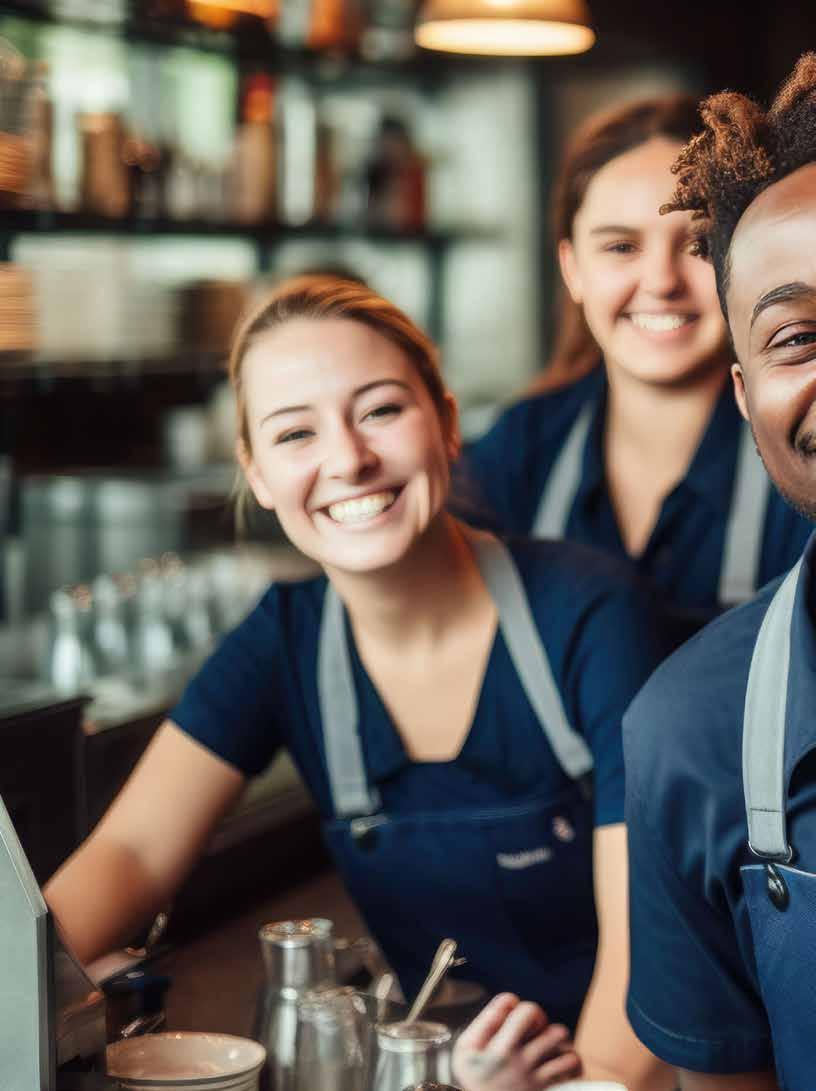
A
guide to helping restaurateurs recruit top talent
By Jessica Brill
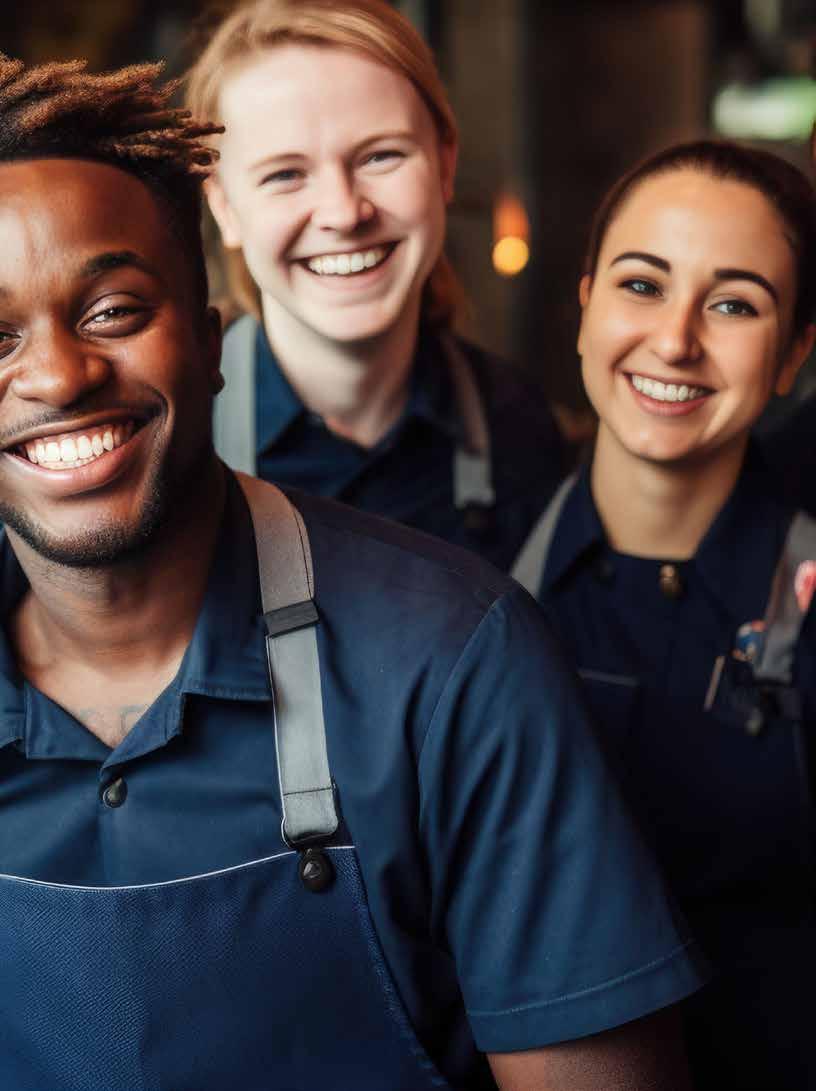
The foodservice industry has been plagued with labour challenges for years, and while it was certainly highlighted during the pandemic, these days, many operators are still struggling to find the top talent they need. With today’s shrinking labour pool and high turnover rates, more than 60 per cent of operators do not have enough staff to meet the demand. About 82 per cent of restaurants are actively hiring, and nearly half of managers confirm that recruiting, retention, and training are their biggest challenges.
Due to smaller staffing numbers, shifting job markets, a growing need for flexible scheduling, and the rising expectations for wage transparency and work-life balance, operators need to be strategic in hiring for success.
Developing a structured practice for hiring can help restaurateurs establish consistency, add efficiency to the hiring process, and find qualified candidates who will help their businesses succeed.
Before even attempting to recruit, restaurateurs need to know where they are falling short and what positions will help them get ahead. “This isn’t just about filling a vacancy - it’s about building culture,” says Kimberly Flear, founder of Last Call Coaching, and author of the eBook Recipe for Thriving Teams. Flear stresses that today’s foodservice industry includes at least three generations of employees in one workplace, each bringing different values, learning styles, and motivators. “If we don’t acknowledge that from the start, our hiring process will certainly miss the mark.”
Start by defining your non-negotiables, not just with a list of skillsets, but consider cultural fit, adaptability, and the behaviours that make your workplace thrive. Look at hard data, too, to better understand the staffing needs for your business. Establish where there are gaps in service, whether full-time or parttime meet your budget, traffic times that would best benefit from more staff, and where potential new team members would fit most seamlessly into your company culture. From there, craft your process to attract and identify those qualities for a successful and thriving team.
“The hiring process should take long enough to ensure you’re making the right decision, but not so long that you lose top talent to a competitor,” Flear advises. So,
keep the process as efficient as possible for a positive experience on both sides. It might be tempting to create a lengthy, detailed hiring method to find just the right people, but that could disappoint prospects and discourage great applicants from even applying.
When it comes to advertising, providing as much information as possible can help you capture those top candidates before they lose interest or take another job. You can do this by providing a very clear and concise job description, as well as staying transparent with hours, pay, and working conditions. With an ambiguous description or a lack of transparency, you might be attracting un-qualified candidates, people who are looking for something different, or applicants who are not aligned with the compensation, and these factors can detract from your appeal, dishearten prospects, and make the process lengthier.
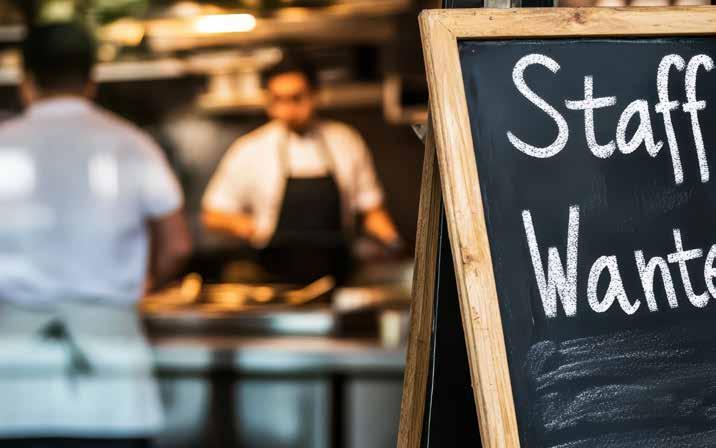
Flear offers some tips for restaurateurs to facilitate a smoother hiring experience that’s a win-win:
• Ask better questions. Go beyond “tell me about yourself.” Dig into how candidates solve problems, adapt under pressure, and collaborate to ensure that you are hiring someone who can add value to your business.
• Involve your team. The people who will work alongside a new hire can often spot cultural fit (or misfit) quicker than a manager. You might also consider adding a referral program for your current employees to motivate them to recommend qualified candidates who suit your culture. This can save you the time and effort of posting the job and sorting through applicants before interviews start.
• Plan for onboarding before you hire. If you don’t know exactly what their first 30 days will look like, you’re not ready to bring them in. Plan to train for the person, not the position, by being prepared to tailor training to their experience level, learning style, and strengths rather than following a generic checklist.
• Consider all avenues. Think outside the box by leveraging resources that attract the candidates you’re looking for. People spend 30 per cent of their waking hours on social media, so take advantage of all platforms when posting jobs and screening candidates.
Never forget, though, that although speed matters in hospitality, so does intentionality. Follow through on your hiring by quickly and effectively onboarding. “A rushed hire without a proper onboarding plan is like seating guests in a half-set dining room — you’re not setting them up for a great experience,” says Flear. Planning, communicating, and executing effective onboarding should also include support systems for the new hire.
The foodservice industry is tough, and setting the tone for a psychologically safe work environment is vital. This is especially true for younger generations who expect more than just training; they want to know they’ll be supported as a whole person, not just an employee, right from the moment they’re hired.
Managing a restaurant is a busy, all-encompassing job in a chaotic environment, and hiring can become another task in a long list of to-dos. Hiring managers can expect a more successful outcome by avoiding these common operator missteps during the hiring process:
• Hiring reactively instead of strategically: Waiting until you are short-staffed leads to rushed decisions and higher turnover.
• Using a one-size-fits-all training model: Not everyone learns the same way, and ignoring that can lead to disengagement.
• Treating onboarding as an afterthought: A weak or non-existent onboarding process can undo a great hire in weeks.
• Focusing only on technical skills: Hospitality is a people business, so personality, adaptability, and cultural alignment can matter just as much as experience.
In the busy world of foodservice, today’s technology can help speed up and refine the hiring process for candidates and for employers:
• AI can save time by crafting the perfect job description, sorting through applications, scheduling interviews, and ranking candidates.




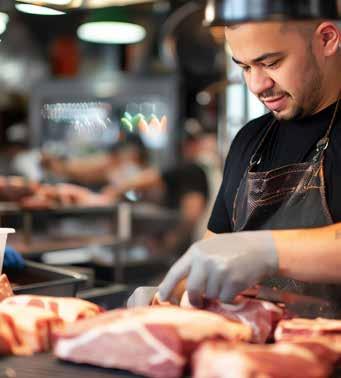
• AI-powered chatbots can pre-screen candidates, helping to guide them through the application process. These tools can also ask questions throughout to help determine whether the prospective employee is even eligible for the role before the application process is complete.
• Contacting candidates via text often yields quicker results and adds a personal touch – even when the messages themselves are automated. Employers can connect this way quickly with
candidates to ask and answer questions or to move on to the next stage in the process.
• Adding technology can also add appeal for people needing application flexibility or extra time to apply for jobs. Research shows that 38 per cent of candidates apply outside the hours of 9 a.m. and 5 p.m., and automation can help increase the number of candidates who apply for the position.
Don’t forget that finding the right fit means that candidates are vetting your business, too.
Building your brand with social media content, positive customer reviews, and high employee ratings can increase candidate confidence in your restaurant. Work on creating an online presence that resonates with your customers and your staff to attract the right applicants and make your restaurant a place where they want to work.
“Today’s workforce is looking for more than a pay cheque. They want to know they’ll be supported, respected, and given a path to grow,” says Flear. That means showing - not just saying - that you value work-life balance, mental health, and a culture where people don’t burn out. Clear communication, flexible training approaches, and a visible commitment to employee wellbeing are huge differentiators in a competitive hiring market.
Hiring top talent is not easy, and with 79 per cent of restaurants short at least one position, there is plenty of competition in the marketplace. With a strategic, efficient approach to hiring, operators who remain informed, proactive, flexible, and tactical will increase their success at attracting and acquiring top talent for their restaurant.

THE CF WOULD LIKE TO THANK AND RECOGNIZE OUR NATIONAL PARTNERS



By Lesley Stav
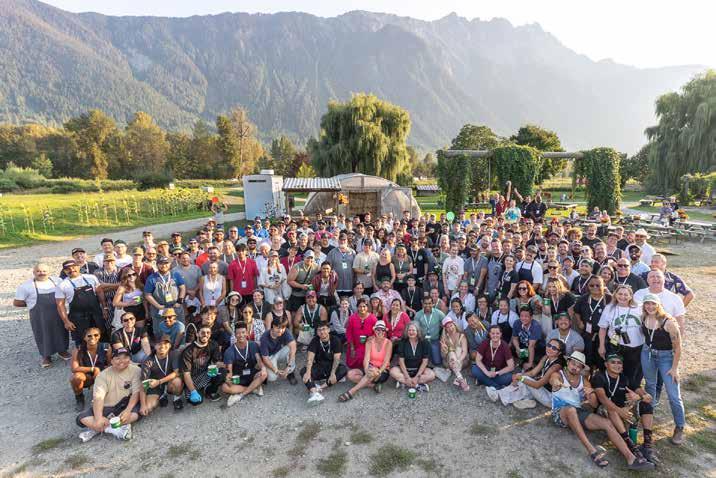
EACH SEPTEMBER, culinary professionals gather at North Arm Farm (NAF) in Pemberton, BC, for three days of cooking, learning, and connecting. Hosted by the Chefs’ Table Society of BC since 2022, CooksCamp has become the ultimate retreat for both new cooks and seasoned chefs.
As a four-year veteran, I’ve experienced it all, and with each year feeling richer, 2025 was no exception. The day began in the crisp mountain air with the Wild Foraging Tour, where multi-award-winning chef Paul Moran led participants through fields and forest edges, pointing out edible treasures hidden in plain sight.
After foraging, we gathered at long communal tables for the Welcome Lunch, where the returning chefs from last year’s Cultural Dinner showcased Filipino cuisine and shared updates on the healing and
resilience within their community following the attack during Vancouver’s Lapu-Lapu Day festival earlier this year.
Afternoons at CooksCamp are hands-on and unforgettable. In this year’s Butchery Demonstration, Butcher Ray Bucknell, supported by Butchery Team Canada, walked us through a whole beef breakdown and fabrication. Chef Brodie White followed with a demonstration on beef and blood sausage making. What sets these sessions apart is the collaboration—participants are invited to jump in, and everything prepared becomes part of future meals.
We then shifted from the kitchen to the fields, and Jordan Sturdy, owner of NAF, delivered a thought-provoking talk on farming and food security, reminding us how deeply our craft depends on the land.
As the sun set, the farmyard came alive with the Cultural Dinner. A team of chefs orchestrated an Italian-themed feast of handmade pasta, rustic risotto, paired with regional wines—a bold undertaking in an outdoor setting.
The night held more than just food. After dinner, participants were treated to a moving tribute. Paul Stewart introduced A Nation’s Table, honouring his late mother, Anita Stewart—a trailblazer of Canadian food culture. Chefs James Walt, Ned Bell, and Rob Clark followed with personal reflections on her lasting influence, speaking with emotion that resonated across the crowd.
and the feeling that another special day would be enjoyed, where newly minted culinary students would mingle, network, and learn from chefs who have led the industry for decades.
A packed day started with a Blue Fin Tuna demo, led by chefs Ned Bell, Joel Watanabe and team, to educate and highlight the importance of passionate fishermen, farmers and ranchers.
A second day of foraging led by Paul Moran took us through the grounds of NAF, providing insight into foraging techniques, highlighting often overlooked plants and culinary delights all around the farm.
A great seminar on media training and media opportunities followed, led by Dawn Chubai, explaining how to maximize media to teach and impress the public with your brand.
Next, the Great Alignment panel discussed initiatives and opportunities available across the broad coalition of associations and boards throughout the province. From the government advocacy and representation of Restaurants Canada to the Okanagan, North Vancouver Island, and BC Chefs Associations, we talked about helping to develop and mentor young chefs across the province. BC Hospitality, Les Dames d’Escoffier, WORTH, Mind the Bar, The Bread-and-Butter Collective, Island Chefs Collaborative, CAPSBC, and Chefs Table Society all talked about what made their associations great and supportive of cooks, chefs, and restaurant workers. This was an important part of aligning our potential and passion to maximize impact.
At lunchtime, Fanny Bay oysters provided a beautiful BC product, grilled and raw, with the perfect blend of brininess and creaminess. Then, we enjoyed fresh and expertly butchered tuna, handmade sushi, and seared, grilled, and raw preparations from chefs Ned Bell, James Walt, Joel Watanabe, and the Kissa Tanto team.
Fueled from lunch, a seminar on financial literacy and restaurant finances was led by chefs Alex Tung, Roxanne Otchkous, and Calen McNeil. The seminar covered the existing opportunities for financing, equipment leasing, banking, and entrepreneurship that cooks cannot always find on their own.
Cindy Conti then led group discussions on real examples of HR challenges and how to address them in kitchens, offering insight into resources available for independent restaurants to help protect them and their employees.
The day’s keynote speaker, Jared Qwustenuxun Williams, talked about Indigenous foodways,







providing the history and importance of the provenance of Indigenous food, as well as examining how we can support Indigenous food in our restaurants. He provided a solid understanding of the ways to appreciate and not appropriate the recipes that define Indigenous food.
A wine seminar from the president of CAPS, Chris Reilly, and a dry aging seminar (with a dryaged beef tasting from Two Rivers Meats) rounded out the day, leading to the World's Largest Family Meal led by chef Scott Jaeger and team. Highlighting delicious foods with African, Korean, Chinese, and Middle Eastern influences, it was a collaborative buffet by some of the best chefs across the country.
As the sun set on CooksCamp, I was reminded that this gathering is about more than cooking—it’s about learning, sharing, and honouring the traditions that shape us. It’s also a rare chance to step away from the kitchen, reconnect, and be inspired by the passion of others. Each year, I leave with new knowledge, fresh connections, and a deeper sense of purpose.
By Erin Bilawchuk

CAPITALCARE
FEAST on the Field has become one of Edmonton’s most anticipated summer traditions - not just because of the food, but because of the community that makes it possible. At its heart, this event is a celebration of generosity, culinary excellence, and the belief that sharing a meal can spark connection and change lives.
One of the driving forces behind this success is Chef Steve Buzak, EdmontonChefs.ca President and Executive Chef for the Royal Glenora Club. For over a decade, Chef Steve has poured his passion, creativity, and leadership into shaping Feast on the Field into what it is today: a one-of-akind dining experience that brings together chefs, students, and guests in support of a vital cause.
Since its inception, Chef Steve has designed and collaborated on menus that highlight Alberta’s finest ingredients, from fresh produce grown by local farmers to artisanal products crafted by small businesses. His approach goes beyond flavour; every plate tells a story
about the land, the people, and the pride we take in our culinary culture.
But what makes Chef Steve’s impact truly remarkable is how far it extends beyond the plate. His commitment to Feast on the Field — and to CapitalCare Foundation’s Charity Golf Classic — has raised critical funds for programs that support seniors living in care. These programs reduce isolation, bring comfort, and create moments of joy for some of the most vulnerable members of our community. Each dollar raised translates into music, companionship, special outings, and the reassurance that seniors are not forgotten.
Chef Steve is also deeply invested in the future of the culinary industry. He understands that the success of an event like Feast on the Field depends on more than seasoned professionals; it thrives when young chefs are given the opportunity to learn, practice, and shine.
Every year, students and junior members of the Culinary Federation join the chef brigade, working side by side with Edmonton’s top talent. Under Chef Steve’s guidance, these young professionals discover what it means to cook not just for a paycheck or for prestige, but for purpose. They learn how to move with precision in a high-pressure environment, how to collaborate across kitchens and skill levels, and how food can be a vehicle for community impact.
For many of these students, Feast on the Field is their first exposure to an event of this scale. They leave not only with new skills but also with a sense of pride and belonging in the broader culinary community. These experiences lay the foundation for their careers and inspire them to carry forward the values of mentorship, generosity, and service.
by
Hosted on the iconic turf of Commonwealth Stadium, Feast on the Field is unlike any other event in Edmonton. Guests trade stadium seats for long harvest tables set directly on the field, surrounded by city skyline views and the energy of live entertainment. Nearly 600 attendees come together to enjoy a multi-course meal crafted by a team of chefs who volunteer their time and talent. Artisan food stations highlight local producers, while a carefully curated selection of craft beverages enhances the dining experience.
The atmosphere is festive yet intimate. Between courses, guests can browse silent auction items, chat with chefs, and soak in the rare opportunity to dine where professional athletes compete. It’s an evening that blends elegance with authenticity, a celebration of both the city’s culinary prowess and its generous spirit.
As we prepare for the 11th annual Feast on the Field, our theme, Best Day(s) Ever, perfectly captures the mission of CapitalCare Foundation. Each year, the Foundation serves more than 12,000 seniors and community members, working to ensure that even in the face of illness, ageing, or isolation, they can still experience moments of joy and dignity.
Thanks to chefs like Steve and the many Culinary Federation members, from established leaders to young chefs just beginning their careers, this mission comes to life. Guests leave the stadium inspired not only by the food but by the reminder that great meals can fuel great causes.
Whether you’ve joined us in past years or are curious to experience the magic for the first time, Feast on the Field is more than a dinner; it is proof of what can happen when a community comes together with chefs, students, volunteers, and guests caring for one another.
At CapitalCare Foundation, we believe it takes a village to make a difference. At Feast on the Field, we know it also takes a kitchen. And thanks to the dedication of our chefs, including the enthusiasm of our EdmontonChef.ca Chef members and Young Chefs stepping into their own culinary journeys, that kitchen is always full of talent, generosity, and heart.
There is always room at the table.
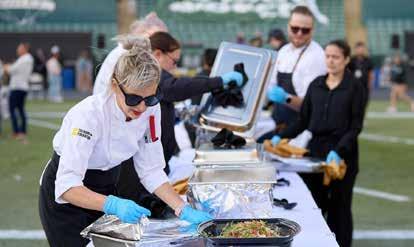

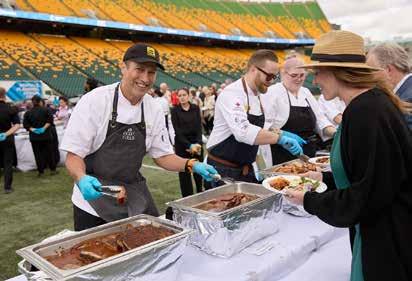
By Shonah Chalmers
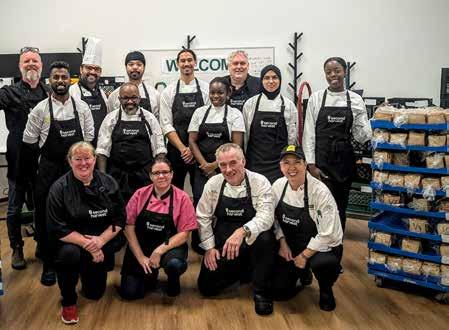

ON AUGUST 7, 2025, the Culinary Federation Toronto Branch brought the heart of our profession - service, generosity, and leadership - into full focus. In partnership with our national community partner, Second Harvest, 14 dedicated chefs gathered to prepare more than 1,100 sandwiches and snack packs for children attending summer camps across the Greater Toronto Area.
This initiative was more than a day in the kitchen. It was a reflection of the Culinary Federation’s mission: to inspire, to lead, and to use our skills for the greater good. With Second Harvest feeding over 5,000 children every week through 22 summer camps across the GTA, our chefs’ contribution directly fueled that vital work. The smiles, energy, and teamwork demonstrated throughout the day were a true testament to what happens when chefs unite with purpose.
Events like this highlight how deeply ingrained the community is within the Culinary Federation. For the Toronto Branch, it was an opportunity not just to showcase culinary skill, but also to stand shoulder to shoulder in service
to others. Each chef volunteered their time, expertise, and creativity to ensure that every sandwich and snack was crafted with care.
The task itself was immense: preparing over 1,100 lunches in a single day. Chefs accustomed to high-pressure kitchens leaned into the rhythm of shared work, from slicing and assembling to packing and organizing. The air was filled with laughter, professional banter, and the quiet pride of knowing that every sandwich made would find its way into the hands of a child who needed it.
As Canada’s largest food rescue organization, Second Harvest has long been a lifeline for communities facing food insecurity. Their ability to redistribute surplus food to schools, shelters, and community programs ensures that nutritious meals are not wasted but instead find their way to those who need them most. Partnering with Second Harvest allows Culinary Federation chefs to magnify their impact, bringing not only food but also hope and dignity to families and children across the GTA.
What stood out most during this event was the professionalism and generosity
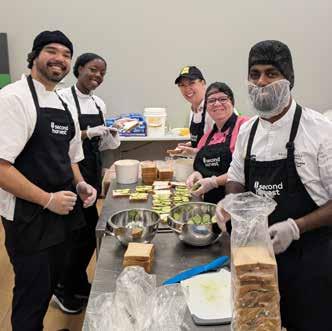

of the chefs who stepped forward. Volunteering time away from their own restaurants, catering companies, hotels, and teaching kitchens, they embodied the values that define the Culinary Federation.
Leadership in our industry is not only about running a kitchen or managing a team; it’s about setting an example for others to follow. By giving their time and talent to support children and families, these chefs demonstrated that leadership is service. Their actions underscored the federation’s commitment to using culinary skills as a force for good - one sandwich, one child, one community at a time.
For those who participated, the day was more than an act of service; it was a reminder of why we do what we do. Food has always been about connection, and in this case, it was about connecting children to nourishment, joy, and the knowledge that their community cares for them.
The camaraderie among the chefs was palpable. Professional rivalries and different backgrounds melted away in the face of a shared mission. This unity is what makes the Culinary Federation so unique: chefs coming together not just to advance their craft, but to strengthen the communities they serve.
The August 7th collaboration is just one example of how the Culinary Federation continues to live its values. As we look to the months ahead, the Federation remains committed to supporting Second Harvest and other community partners in meaningful, impactful ways.
Feeding over 1,100 children in a single day is no small feat! But more importantly, it reflects the kind of ripple effect our industry can have when we work together. Every sandwich represented not only sustenance but also kindness, generosity, and leadership in action.
This event demonstrated the very best of what the Culinary Federation represents: community, professionalism, and leadership. It was truly inspiring to witness chefs coming together to make a difference and using their skills and passion to support children across the GTA.
In the end, this is what community looks like. This is what leadership looks like. This is what it means to be part of the Culinary Federation.
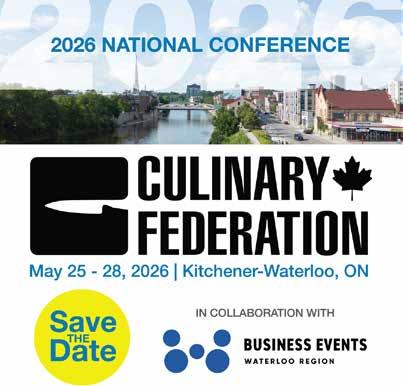

IN MAY 2026, the Canadian culinary community will come together in one of Ontario’s most dynamic destinations for the 2026 Culinary Federation National Conference. Chefs, culinary professionals, and industry partners from across Canada, the United States, and beyond will gather in the Waterloo Region -a place where innovation and tradition blend seamlessly to create a rich and authentic culinary identity.
Set against a backdrop of bustling farmers’ markets, cutting-edge food start-ups, farm-to-table dining, and thriving breweries and distilleries, the conference promises four days of learning, connection, and discovery. Delegates will experience a thoughtfully curated program that shines a spotlight on Waterloo’s growers, makers, and chefs, while also advancing professional development and sparking conversations about the future of Canada’s food culture.
Highlights include themed culinary tours linking attendees directly with local producers, restaurant dine-arounds that showcase independent talent, and a product showcase and networking events infused with regional flavour. You’ll also have the opportunity to see 3 Canadian Culinary Teams in action, along with Chef members from across Canada representing their regions in the National Culinary Competition. Every detail of the conference - from meals to receptions - will celebrate local suppliers and signature products, while pre- and post-conference excursions will extend the experience into the wider region, amplifying its culinary and tourism story.
More than a conference, this is an opportunity to partner, participate, and showcase. Local chefs, food entrepreneurs, and tourism hosts are invited to be part of the program, welcoming delegates into their kitchens, fields, and businesses. Together, we’ll not only elevate professional learning and connection but also create lasting benefits for the host community by reinforcing Waterloo Region’s reputation as a must-visit culinary destination.
Whether as an attendee, partner, or host, we invite you to join us in celebrating the flavours, people, and stories that make Canadian food culture so extraordinary. See you in Waterloo for #CF26!
To learn more about how to get involved, contact:
Sue Mercer – Event Producer, Canadian Culinary Federation sue@stepinmarketing.ca 416.569.2433









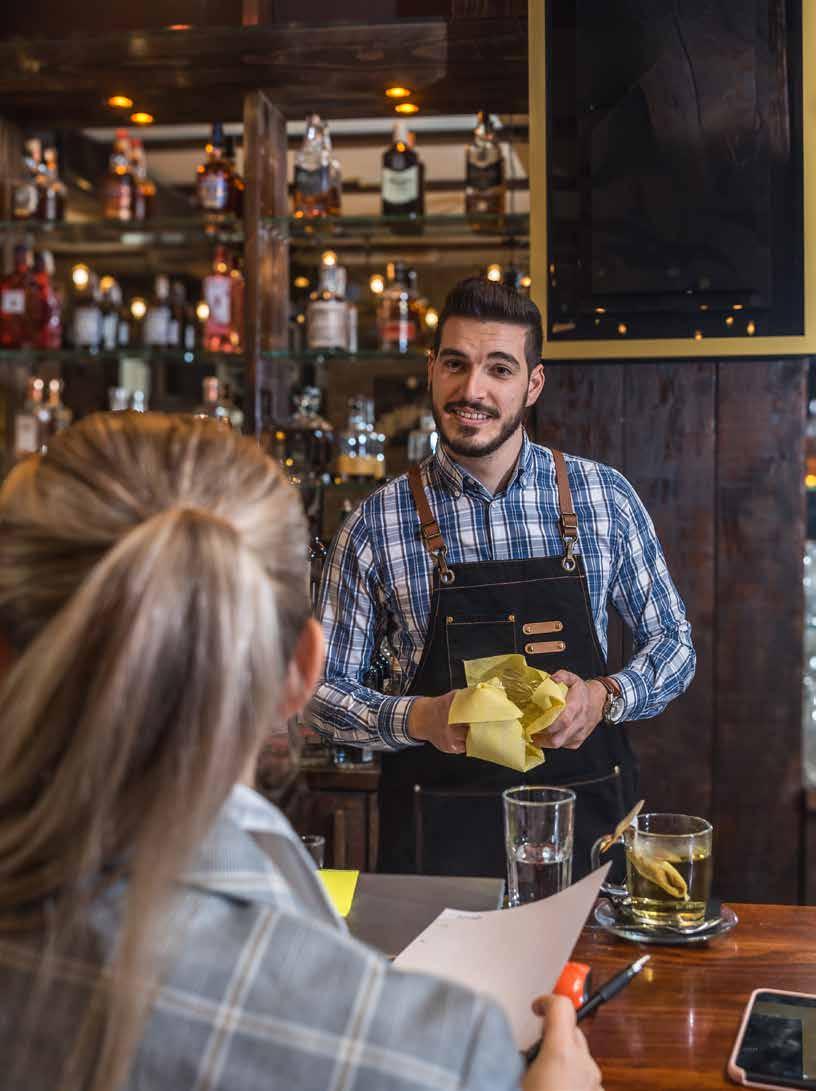
By David Hopkins
While the restaurant industry has always been challenging, it is particularly difficult for restaurants to make money in today’s economic climate. Food costs are up, tariffs are making supply chains more complicated, and consumer spending is down. That being said, there are three main things that restaurant owners can do to maximize profits in today’s economy.
One of the most important elements of restaurant success is guest experience. A recent survey found that 64 per cent of people who rated their recent restaurant experience a seven or eight out of 10 would return to that spot, compared to 93 per cent who would only return to a restaurant where they rate their experience a nine or 10. If your guests have a great experience, they are more likely to come back and refer your restaurant to their friends, all of which drives revenue.
Revenue is the most critical thing in a restaurant operation. Once you’re up and running and covering operational costs, between 40 and 50 per cent of any additional incremental revenue goes directly to the bottom line, specifically incremental guest traffic revenue. The next thing to understand is the value proposition, which is the difference between what you get and what you pay. At a restaurant, the value proposition is the experience you had vs. how much it cost you. Restaurateurs often decrease prices to improve the value proposition (with happy hours, promotions, and more), but that’s not the only way.
Instead, improve the guest experience to boost the value proposition, so you can continue driving revenue. Providing an excellent guest experience also allows you to raise prices more easily. How do you do this?
Adopt the mindset that “pretty good” or “not bad” isn’t good enough. Develop an organizational culture of exceptional guest experiences, with a system of shared values which governs how people behave in organizations. These values have a strong influence on people and dictate how they dress, act, and perform their jobs. This mindset will ensure that your team will always be thinking of what can be done to elevate the guest experience.
Menu engineering is critical to restaurant
profitability, yet most operators aren’t doing it – only about 10 per cent of restaurants have properly engineered their menu. Menu engineering is a strategic review of your menu that identifies popular and profitable items to make the most of your offerings and capitalize on incremental revenues. Proper menu engineering allows operators to maximize menu profits, improve the guest experience, and streamline inventory. In the current climate, with restaurants facing labour shortages and inflation – just to name a few challenges – menu engineering should become a common practice. If not focusing on menu engineering, you’re leaving money on the table.
Menu engineering is sometimes conflated with menu development in the industry. While the two share a lot of common ground, there are key differences between them. Menu development involves building and writing recipes that will be successful in your concept and appeal to guests, then naming them, and creating physical or digital copies that align with your brand.
Menu engineering is the process of determining the profitability of each item and pricing accordingly to optimize your bottom line. This is often achieved by using margin menu pricing, starting by costing the whole menu, then plotting dishes on a Quantity vs Margin (QuaM) graph. A QuaM graph visually depicts a menu item’s popularity relative to its profitability over time. This helps operators to simply understand how each menu item contributes to the restaurant’s profit.
Completing this exercise allows restaurants to expand menu profit, improve guest experience, and streamline inventory. Experience has shown that, generally, a menu that is engineered for profit maximization using these techniques will add three to four per cent of sales to the bottom line. For an operation with $2 million in sales, that equals up to $80,000 per year of additional profit.
Knowing where you’re at financially, and where you’re going, with checks and balances along the way to ensure your operation is profitable, is critical, as 70 per cent of restaurant expenses are variable. A lot of this comes down to product cost control and labour cost control.
In terms of product control, restaurant owners must accept the fact that staff steal and overportion. 75 per cent of employees have confessed to stealing from their employer, according to the U.S. Chamber of Commerce. Most of the time, they see it as “scamming,” or just “taking a bit extra” instead of stealing, but it can have a significant impact on bottom-line profitability. Over-portioning also often comes from a good place – being generous – but is critical to get under control.
To prevent these issues, work on fostering an environment of respect and communication in your restaurant, which will make your team feel less compelled to steal. Installing cameras and being present on the floor as much as possible will also work to rectify the issue. Providing your staff with scales, pre-portioning tools, and ongoing training are great strategies to curb overportioning.
Tightening up your product control will go a long way to improving fiscal responsibility. Where labour is concerned, it may be tempting to cut labour to save money and increase margins, but this can lead to negative guest experiences and decreased sales. Instead, improve labour management with sales forecasting and scheduling to a budgeted amount. There are great tools available that can facilitate and streamline this process. It is also critical to track labour daily to ensure you’re aligned with your budget. This will allow you to reduce labour costs without compromising guest experience, helping to boost the bottom line and maximize your restaurant’s profits.
David Hopkins, President of The Fifteen Group, has over 30 years of experience in the restaurant industry. With offices in Toronto and Vancouver, they have over 30 industry experts who cover all aspects of restaurant operations, from developing new restaurant concepts to maximizing restaurant profits through effective sales generation and disciplined cost control management. The Fifteen Group’s clients range from owner/operated establishments to multi-unit restaurant corporations.

A hygiene checklist for safer, smarter restaurant restrooms
By Dotti Haynes
What if the most important part of your restaurant isn't your kitchen, but your restroom? For 73 per cent of diners, a negative bathroom experience directly impacts their willingness to return – making your restroom a silent ambassador for your entire operation.
When guests encounter a dirty restroom, they don't just notice poor cleaning; they start questioning what's happening behind the scenes in your kitchen, turning a simple visit into a trust issue that can cost you long-term loyalty.
The good news? Transforming your restroom from a liability into a competitive advantage doesn't require a complete overhaul. Whether you're gearing up for the holiday rush or building a foundation for brandbuilding engagement, the strategies below will help you create restroom experiences that build guest confidence, better equip your staff, and reinforce the quality standards that drive repeat business.
PRIORITIZE HYGIENE TO PROTECT YOUR REPUTATION AND BOTTOM LINE
Cleanliness isn’t just about compliance; it’s about customer trust and business performance. With an estimated half of Canada’s four million annual foodborne illnesses cases linked to restaurants, poor hygiene can lead to serious health risks, reputational damage, and lost revenue. Even restroom cleanliness affects profitability: nearly a quarter of guests admit to limiting food or drink intake to avoid using unclean facilities, which directly impacts table turnover.
To safeguard your brand and streamline operations, equip your team with modern, effective tools. Replace reusable rags with disposable wipes to reduce crosscontamination, install touchless hand hygiene stations to minimize bacteria spread, and opt for paper towels over jet air dryers. These upgrades are especially valuable for smaller establishments with limited storage and staffing, helping ensure a cleaner, safer experience for every guest.



MAKE HYGIENE EASY TO FOLLOW — AND HARD TO MISS
Staff are more likely to follow hygiene protocols when they’re visible, accessible, and reinforced with proper tools. Ensure handwashing stations are well-stocked, touchless, and strategically placed throughout the restaurant. Keep cleaning supplies within easy reach of prep and service areas and use clear signage to remind both staff and guests of hygiene expectations.
Gloves can be a valuable tool – but only when used correctly. Staff should wash their hands before and after glove use, change gloves between tasks or food types, and avoid reusing gloves across zones. Assign reusable gloves to specific cleaning areas to prevent cross-contamination and reinforce these practices regularly to maintain high standards.
CLEAN FIRST, THEN DISINFECT
Effective hygiene starts with a two-step process: clean visibly dirty surfaces with detergent and water, then disinfect using an
"Transforming your restroom from a liability into a competitive advantage doesn't require a complete overhaul."
approved solution and a disposable cloth. Pay special attention to high-touch areas like appliance handles, POS terminals, restroom fixtures, and food prep tools. These surfaces are hotspots for germ transmission and should be disinfected multiple times throughout the day.
BUILD A CULTURE OF CLEAN THROUGH DAILY PRACTICE AND LEADERSHIP
A strong hygiene culture starts with consistent training and visible leadership. With many employees new to the industry, hygiene protocols should be reinforced daily – use pre-shift meetings for quick refreshers with visual aids and hands-on demos. Keep sessions short, focused, and tied to real-world
tasks to boost confidence and compliance. It is equally important to lead by example. When managers model best practices and recognize staff for maintaining standards, cleanliness becomes part of the restaurant’s identity. Share inspection scores, celebrate hygiene wins, and consider bringing in consultants to audit and improve protocols. Together, daily training and leadership set the tone for a clean, safe, and trusted dining experience.
TRAIN AND RETRAIN YOUR TEAM
With many restaurants facing staffing challenges, it's common for employees to be new to the industry and unfamiliar with basic hygiene practices. To address this,


hygiene training should be integrated into the daily rhythm of operations. Start by incorporating quick hygiene refreshers into pre-shift meetings, using visual aids and live demonstrations to reinforce key practices. These sessions should be short, engaging, and consistent. Rather than treating hygiene training as a one-time event, make it an ongoing part of the team’s development to ensure that standards are maintained and improved over time.
Now is the perfect time to step back and evaluate your hygiene protocols with fresh eyes. Conduct a full audit of your cleaning tools, products, and procedures. Are your staff using the correct
Sources
techniques? Are high-touch surfaces being disinfected often enough? Are restrooms consistently meeting guest expectations? Walk through your space as a guest would – from the entrance to the restroom – and note any gaps in cleanliness, signage, or supply levels. Use this time to retrain staff, update checklists, and make small improvements that can have a big impact during the busy months ahead.
A clean kitchen and restroom aren’t just about compliance; they’re about customer trust, staff morale, and long-term profitability.
In a market where diners expect more for less, hygiene is a differentiator. It’s a signal of professionalism, care, and respect. By following this checklist and fostering a culture of cleanliness, restaurants can not only meet expectations but exceed them.
Dotti Haynes, Marketing Director, HoReCa Segment at Essity, has over 20 years of experience applying creative thinking for innovative strategic marketing solutions for B2B and B2C applications. In her role at Essity, she leads a marketing team that develops, drives, and executes the Hospitality, Restaurant, and Catering segment marketing strategy in North American, European, and MEIA (Middle East, India & Africa) markets. Dotti holds a B.S. degree in Design and Merchandising from Drexel University, as well as an M.B.A. from Rutgers University – Camden.
1. OpenTable looked at seated diners from online reservations from all active restaurants on the OpenTable platform in Canada, per time slot and party size, from January 1 - April 9, 2025, and compared it to the corresponding period in 2024.
2. An online survey was conducted by PureSpectrum among 1002 Canadian consumers. Within this sample, major cities were weighed for direct comparison. The research fieldwork took place between October 25 and November 4, 2024.
By Kris Bonn

As restaurant operators run their businesses, employer liability is something that must be clearly understood, and it refers to the legal responsibility that employers bear for injuries or illnesses sustained by employees in the workplace. In Ontario, the framework for this liability is primarily governed by the Workplace Safety and Insurance Act (WSIA).
The Workplace Safety and Insurance Board (WSIB) is Ontario’s primary system for handling workplace injuries and illnesses. Most restaurants are classified as Schedule 1 employers under the Ontario Workplace Safety and Insurance Act (WSIA), meaning they are required by law to register for and participate in WSIB.
MANDATORY WSIB COVERAGE AND HOW IT WORKS
Most restaurants are required to register with WSIB, including full-service, fast-food, and catering businesses. Some exceptions exist, such as certain family-run restaurants without employees, but these exceptions are rare.
When an employee is injured in a WSIBregistered restaurant, there are a few actions that need to take place:
• The worker reports the injury to their employer, who must then notify WSIB within three days.
• The employee may receive compensation for lost wages, medical expenses, and rehabilitation services while recovering.
• WSIB typically covers all reasonable costs related to workplace injuries, regardless of fault.
• Employers pay premiums based on the industry classification and claims history.
EMPLOYER PROTECTION
A key feature of WSIB is the concept of the “historic trade-off.” In exchange for mandatory coverage, employers receive protection from most lawsuits initiated by injured employees for workplace injuries. The worker’s sole recourse is to make a claim through WSIB. It is important to note that they may not sue their employer for negligence except in rare circumstances (such as intentional misconduct).
EMPLOYER RESPONSIBILITIES
What are the responsibilities of the employer? Restaurant operators and owners under WSIB must:
• Complete reporting: Employers must promptly report all workplace injuries and illnesses to WSIB.
• Support return-to-work: Employers must make efforts to accommodate and return injured workers to suitable employment.
• Manage premium payments: Employers must pay premiums according to the restaurant’s payroll and risk classification.
• Maintain health and safety: Employers must maintain a safe working environment, provide safety training, and comply with the Occupational Health and Safety Act (OHSA).
RISKS OF NON-COMPLIANCE WITH WSIB
Failure to register with WSIB or report injuries can result in significant penalties, including fines, orders to pay retroactive premiums, and personal liability for unpaid benefits. In addition, workplace safety inspectors may shut down operations until compliance is achieved, potentially resulting in lost business and a damaged reputation for the restaurant. All restaurant owners and operators must register with WSIB and pay premiums to avoid the risk of noncompliance.
Regardless of WSIB status, all Ontario restaurant employers are subject to the Occupational Health and Safety Act (OHSA) of Ontario. The Act mandates employers to:
• Take every reasonable precaution to protect workers.
• Provide training and supervision for safe work practices.
• Correct hazardous conditions promptly.
• Report serious injuries to the Ministry of Labour.
Failure to comply can result in fines and prosecution for the business, even if no injury occurs.
Restaurant owners and operators can and should take the following steps to reduce exposure to liability:
• Register with WSIB: Register promptly to access coverage and legal protection.
• Document safety procedures: Implement clear safety protocols such as training, maintenance, personal protective equipment, and emergency procedures.
• Maintain records: Keep detailed records of training, incidents, and corrective actions.
• Foster safety culture: Encourage employees to report hazards and nearmisses.
• Report injuries to WSIB: It is important to promptly report all employee injuries to WSIB. Failure to report employee injuries in the workplace can result in the injured employee not receiving medical treatment and income support while they are unable to work.
• Consult legal counsel: Engage a lawyer familiar with employment and occupational health law for tailored advice.
Employer liability for injuries in restaurants is shaped by whether the workplace falls under WSIB or operates outside the regime. For most, WSIB coverage offers vital protection and clear procedures, but it demands diligence in reporting, compliance, and paying premiums. For the few non-WSIB restaurants, the risks and obligations under common law are considerable indeed and must be mitigated by strong safety programs and legal advice. Above all, proactive measures to ensure employee safety are both a legal necessity and an ethical imperative in the vibrant, fast-paced world of restaurants.
Kris Bonn, Partner at Bonn Law, lives and practices law in Belleville, Ontario. His practice includes representing plaintiffs in motor vehicle collision tort cases, accident benefits, medical malpractice, and personal injury cases. He is a Past President of the Ontario Trial Lawyers Association (OTLA), and graduated from Queen’s University in 1997 in Commerce and from the University of Toronto Law School in 2000. Kris was called to the Ontario Bar in 2002. Kris is an LSO Certified Specialist in Civil Litigation and is President of the Brain Injury Association Quinte District (BIAQD).
How social media can shape your menu before it’s even served
By Mila Holosha

Most restaurants only think about social media after the menu is finished. The food is ready, the photos are taken, and the goal is simple: post so people know it exists. But what if you used social media before the menu was complete?
Few restaurants do this, and fewer still do it well. Yet early involvement can turn an ordinary menu into something guests are already excited about, before they’ve even tasted it. When used with intention, social media doesn’t just promote a menu. It can help you create one that feels like it belongs to your guests, and not just your kitchen.
This isn't just about marketing; it's about connection and making social media part of your menu's core from the very beginning.
GET YOUR GUESTS HELPING TO CREATE THE MENU
Here’s how most menus get made: the chef and owner brainstorm, maybe the manager weighs in, and the team agrees on what “feels right” or “seems fresh.” There’s nothing wrong with that, except it's only one perspective - yours.
But there’s another way: start from the guest’s point of view. Step into their world for a moment. Scroll their feeds. See what dishes, colours, and styles they’re reacting to. Notice who inspires them, what they share, and the language they use when they talk about food.
Your guests are already telling you what they want through their likes, follows, and posts; you just have to listen. This isn’t guesswork. It’s insight, drawn from real behaviour, that can help you build a menu people are eager to try.
BUILD EXCITEMENT BEFORE THE LAUNCH
You don’t need to keep your menu a secret until launch day. In fact, letting people in on the process can make them feel more invested – and social media makes it easy.
Show behind the scenes: the chef choosing the perfect sauce for a dish, the team tasting the menu, the farmer delivering fresh ingredients. Create context. For example, if it’s an autumn menu, add seasonal touches to your content: falling leaves, cozy textures, warm lighting.
Get people involved: run polls, ask them to choose between two desserts, and invite name ideas for a signature cocktail. Even small interactions give guests a sense of ownership. And when people have a hand in creating something, they’re far more excited to experience it.
Every time you post an update, you’re not just building hype for a menu - you’re building trust in your brand. Over time, those interactions turn casual followers into a community. And when new visitors see the energy around your account, they’ll know instantly that your restaurant is more than just a place to eat.

It’s tempting to think that a new menu is enough to draw a crowd. But in today’s online world, one “We have a new menu” announcement post is easy to miss in a feed full of competing noise.
Instead, think in layers and share your menu in different ways, over time.
Host a pre-launch tasting and invite loyal guests, announce it online, encourage attendees to take photos, videos, and repost what they share. This not only gives you authentic user-generated content, but it also turns online buzz into an in-person experience.
The more ways you present your menu, the more chances you give people to pay attention and the more people you can reach.
People may forget the details of a menu, but they remember a good story, and every dish has one. Maybe it’s inspired by a theme of your restaurant, or it came from a trip your chef took years ago, or maybe it’s a playful twist on a local favourite.
Tell these stories. Share them in captions, short videos, or posts from your team. Let people in on the thought process, the experiments, even the
failures along the way. Stories make food personal, and when food feels personal, it’s much more likely to be remembered.
LET
The way you show your menu is just as important as what’s on it.
A close-up of a dish is fine, but it’s just food on a plate. Show that same dish on your terrace in the summer sun, with your branding on the plates, napkins, or menus, and a glimpse of your interior, and suddenly it’s not just a meal - it’s your restaurant’s experience.
Every visual you post is a chance to communicate what you stand for: warmth, creativity, elegance, playfulness, tradition, or innovation. These cues help people form a picture of your brand before they ever walk through your door.
Using social media at the menu creation stage isn’t about adding more work to your plate. It’s about shifting the way you think. Instead of treating social media as a megaphone for what’s already done, use it as a conversation to shape what you create next. When you invite people in, they don’t just follow your updates; they follow your journey. And in a crowded restaurant market, that journey might be the very thing that keeps them coming back.
Mila Holosha is an International Restaurant Marketer, the Founder & CEO of Hospitality Marketing Strategies, and the Author of “More Than a Restaurant: Turn Customers into Fans.” She is also the Host of The Restaurant Marketing Insights Podcast.
By Samir Zabaneh

With an unpredictable economy, persistent tariffs, and evolving habits reshaping the culinary landscape, the Canadian foodservice industry has faced mixed challenges and opportunities in the past. Recent reports paint a clear picture of inflation's impact on the foodservice industry and shifting dining preferences.
Rising menu prices have emerged as a major deterrent for diners, with 82 per cent of Canadian diners reporting that significant price increases would discourage them from dining out, and 84 per cent saying the same for takeout and delivery. For foodservice operators, the takeaway is clear: while slight menu adjustments may be necessary to balance rising costs, price increases should remain under 11 per cent, the threshold at which consumer willingness begins to invariably drop.
Despite price concerns, Canadians are still spending more per dining-out occasion, averaging $63 per cheque, which is a $7 increase from the previous year. Restaurants can retain diners by providing clear value, such as happy hour deals, affordable menu options, and transparency around additional fees like service charges.
Takeout and delivery remain resilient
Ordering takeout and delivery has become a mainstay of Canadian dining culture. 30 per cent of diners now report ordering takeout at least once a week, outpacing dine-in rates. The importance of convenience is a key motivator for 43 per cent of respondents who ordered takeout more frequently than the year before. Millennials and Gen Z dominate off-premise dining, with 39 per cent ordering in at least once a week. However, customers can get easily frustrated by inaccurate orders (27 per cent), high fees (22 per cent), and cold food (15 per cent) Restaurants looking to attract off-premise customers should consider offering direct online ordering systems to bypass third-party app fees and incentivize pick-up orders.
There is a growing customer preference for placing to-go orders directly with
the restaurant, with 22 per cent preferring to place an order by phoning the restaurant directly over other options. Off-premise ordering is centred on reliability, and 30 per cent of diners say they expect their takeout orders within 30 minutes, leaving little margin for error. To meet the demand, restaurants must focus on logistics and staff efficiency.
Generational dynamics are reshaping Canada's dining scene, as Millennials and Gen Z dine out far more than Gen X and Boomers, making them critical demographics for foodservice operators to target. This suggests that costconsciousness is dominating decision-making in 2025, with Gen X diners being the most sensitive to pricing changes. Additionally, 25 per cent of 18 to 34-year-old diners now dine alone compared to just 18 per cent the year before. Capitalizing on the rising solo dining means creating welcoming spaces for individual diners, such as bar seating or individualized table arrangements, and crafting menu items geared toward their lifestyles.
Additionally, Gen Z and Millennials are leading the way in loyalty program participation: 42 per cent are members of restaurant loyalty programs, up from 29 per cent in 2024. These programs are particularly effective in driving frequent engagement, with 40 per cent of members interacting with loyalty programs weekly or more often. Tailoring offers like personalized discounts, limited-time offers, or BOGO (Buy One, Get One Free) deals can help younger diners feel heard.
While 52 per cent of diners feel somewhat or very comfortable with technology, this acceptance often skews toward younger generations. Gen Z and Millennials are driving adoption, with 64 per cent open to technology such as self-serve kiosks or tableside tablet ordering, compared to only 33 per cent of Boomers. Operators must thoughtfully integrate technology without detracting from the human element with innovations like streamlined online ordering systems or payment automation tools for operational efficiencies while preserving what Canadians value most: personalized service. For operators cautiously exploring AI solutions, an initial focus on non-invasive implementations like AI-driven discounts and menu offers may face less customer resistance.
The Canadian foodservice industry demands adaptability in a fast-changing market. Success hinges on data-driven strategies to address shifting consumer preferences, while leveraging technology to improve operations and customer experiences. Building strong supply chain relationships, managing rising costs, and staying flexible are also key. By focusing on innovation and informed decision-making, foodservice professionals can ensure they remain flexible and resourceful.
Samir Zabaneh is the CEO of TouchBistro, an all-in-one restaurant management system. He has held various executive roles, including CFO and COO in large global fintech companies, including Fiserv Inc. (previously First Data), Global Payments (previously Heartland Payments) and Moneris Solutions, executing various successful strategies related to vertical-specific software solutions integrated with payments processing.













Our brewmaster, Andrew Kohnen, threw away a successful career in logistics to pursue his dream of reconnecting with the brewing roots of his family. This carried him to the UK’s prestigious Brewlab in Sunderland, England, where he procured the alchemy that would drive his signature brewing style.
He took what he could from there and ventured to Scotland, Cornwall, and ultimately to Krefeld, Germany, working in the same brewery that had belonged to his ancestors. He came home to Canada for Hockley.
You could call it dumb, but we call it destiny.



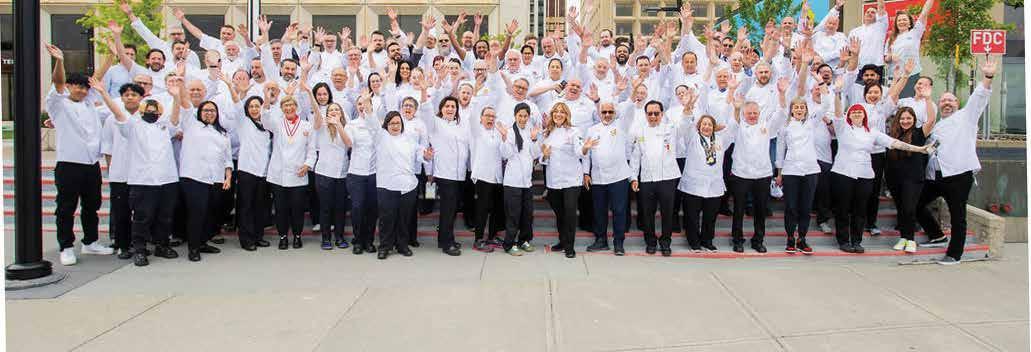
The Culinary Federation gives professional chefs and cooks from across Canada an opportunity to connect locally, nationally and internationally with culinary peers – to network and learn from each other, give back to the local community and mentor up-and-coming professionals.
– Connections and networking through local branch events and annual conference
– Chef certification programs
– Cost savings and promotions from national and regional partners
– Member offers from: Park ‘n Fly, Rogers Mobility, Johnson/Belair Insurance, Entegra, TrainCan, In the Weeds and so much more .... For more information and to join our culinary community, click the QR code or go to: www.culinaryfederation.ca
